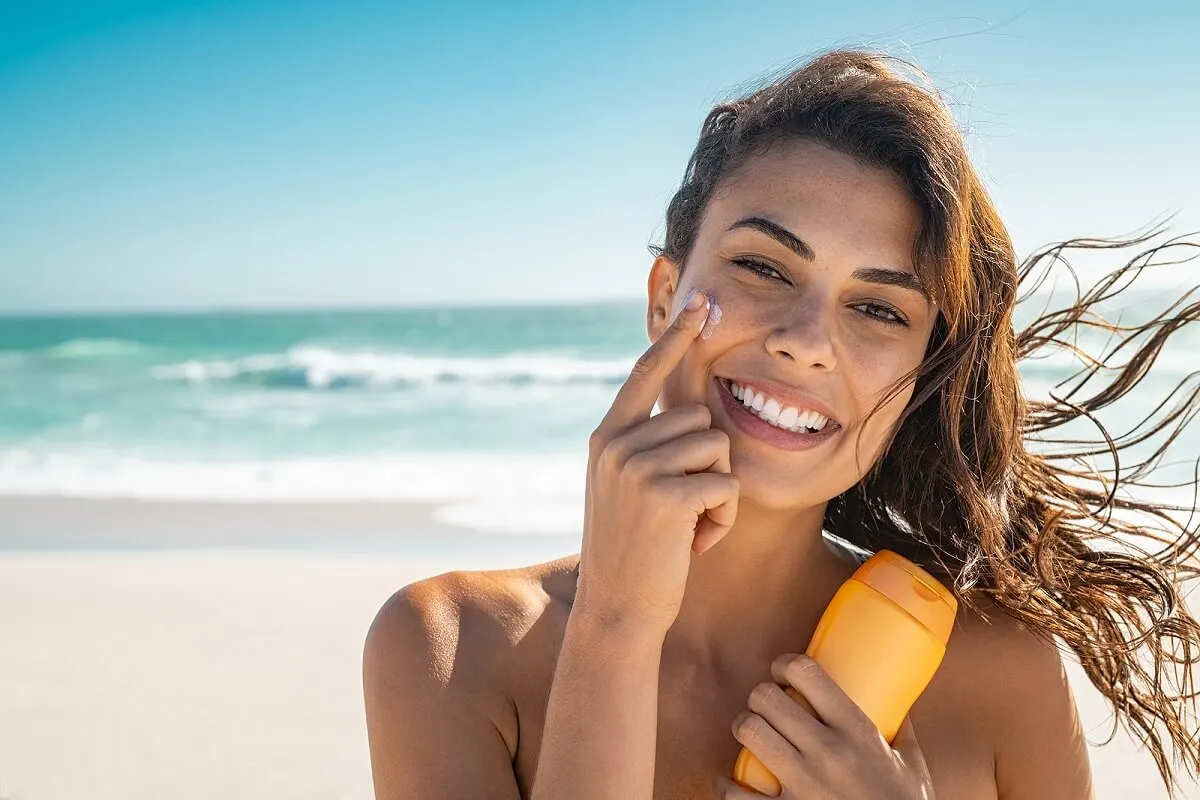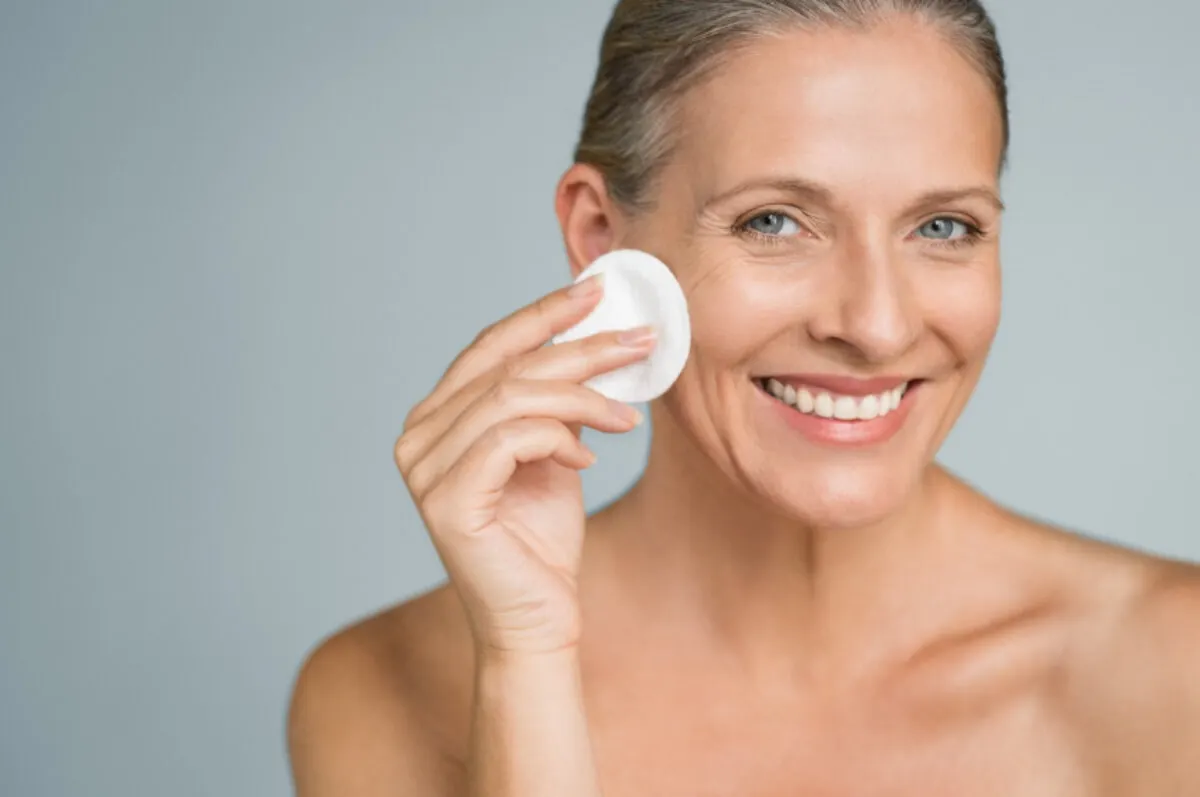Do You Know How to Remove Sunscreen from Your Skin Correctly?


Reviewed and approved by the nurse Leidy Mora Molina
Just as you remove makeup from your face to take care of its appearance, it’s necessary to completely remove sunscreen from your skin. The function of this product is key in protecting against ultraviolet (UV) rays; but when it isn’t removed correctly, the effects are counterproductive.
By using the right cosmetics for facial hygiene, you’ll ensure total removal of the sunscreen and leave the skin ready to assimilate the rest of the beauty routine.
In addition, thoroughly cleansing the skin until it’s free of sweat and sunscreen residue reduces possible damage and delays the signs of premature aging. Before going deeper into why it’s essential to clean it, let’s see the relevance of its use.
What is sunscreen and why is it important to use it?

Sunscreens protect or absorb the sun’s UV radiation so that people don’t suffer burns. The application of these substances minimizes the risk of skin cancer.
There are chemical filters that capture and transform solar energy so that it doesn’t harm the skin, but they’re considered toxic in comparison with physical protectors. The latter are known as “minerals”, as they’re manufactured with inert powders composed mainly of titanium dioxide and zinc oxide.
Both ingredients create a layer on the dermis, reflecting sunlight and preventing UV rays from penetrating the body. As absorption doesn’t occur, the probability of allergies and toxicity is reduced.
Discoloration, hyperpigmentation and dryness are also consequences of not applying a sun protection factor (SPF).
The Spanish Academy of Dermatology and Venereology points out that photoprotection is a appropriate way to sunbathe because it prevents skin and immune system alterations in the long term.
In this regard, the recommendation of the Foundation Against Skin Cancer is that everyone from the age of 6 months should use sunscreen every day, even if they are in covered areas or the exposure to ultraviolet radiation is brief. Now, what happens if you don’t remove sunscreen from the skin?
Get to know more: Is it Possible to Use Self-tanning Lotions During Pregnancy?
Why should you remove sunscreen from the skin correctly?
The daily application of sunscreen is just as important as removing it at night. Omitting this action clogs the pores with impurities and makes it difficult for the skin to breathe freely. In addition, a dirty dermis opens the way to the formation of comedones, blackheads, and whiteheads. Another consequence is that the skin becomes oily and susceptible, accelerating the appearance of wrinkles.
How to remove sunscreen from the skin correctly

When you purchase sunscreen, the American Academy of Dermatology suggests checking the label to confirm that it’s a “broad spectrum” product with an SPF rating of 30 or higher and that it is water-resistant.
However, it is the water resistance that sometimes makes it difficult to remove sunscreen. Here are some tips on how to properly remove sunscreen from the skin.
All products used to sanitize the skin should correspond to the skin’s condition.
Double cleansing
Double cleansing is one of the best ways to remove sunscreen from the dermis.
- The first step involves removing all the product with a balm, cleansing milk or oil. Such cosmetics attract all skin oil, makeup and sunscreen residues.
- The second phase is cleansing with a gel or a deep cleansing foam that gets rid of all traces of dirt by rinsing with water.
The double cleansing method is suitable for those who wear heavy makeup, those with acne-prone skin, and those who spend too much time in outdoor urban environments.
Makeup remover
Makeup remover oils have properties that emulsify with water and don’t stay on the skin, so they don’t harm oily complexions. On the contrary, they are make-up removers that cleanse and nourish the pores, in addition to brightening the face.
Micellar water
Micellar water stands out for its effectiveness, gentleness, and speed in cleansing the skin to the point of removing the sunscreen that remains under the makeup. Surfactants and water are its primary components; together they act as a powerful remover of sunscreen, skin pollution, and excess sebum.
The popularity of micellar water is also linked to their toning and moisturizing abilities. To sanitize your skin with this product, wet a cotton pad and wipe it over your complexion.
Foam
Foam cleansers are simple to apply and remove. You just need to spread the product over your face, using your fingertips. Massage gently, preferably rinsing with lukewarm water; cold water is not as effective at removing traces of cleanser. On the other hand, if it’s too hot, you run the risk of irritating the skin.
We invite you to read: Biodegradable Sunscreens: What Are They and Why are They Recommended?
Remove sunscreen from the skin and give it a break
By removing sunscreen correctly, you help the skin to breathe better. Accumulating SPF particles on the complexion is a source of attraction for different pollutants that weaken the dermis and occlude pores.
A publication in Vive Journal of Health Research says that clogging of the hair follicle duct leads to a closed pore, where sebum and corneocyte cells accumulate, prone to become a breeding ground for bacterial proliferation. The sequelae would be inflammation and closed comedones with infectious content.
The precaution against these possible dermatological conditions is the use of special products for each skin type; in addition to strict hygiene with cleansers that have the scope to remove potent substances such as sunscreen.
All cited sources were thoroughly reviewed by our team to ensure their quality, reliability, currency, and validity. The bibliography of this article was considered reliable and of academic or scientific accuracy.
- Cómo seleccionar la protección solar. Academia Americana de Dermatología. https://www.aad.org/public/everyday-care/sun-protection/espanol/como-seleccionar-la-proteccion-solar
- Guerra A. Fotoprotección, presente y futuro. Academia Española de Dermatología y Venereología. España; 2009. https://aedv.es/comunicacion/notas-de-prensa/fotoproteccion-presente-y-futuro/
- Protector solar: acerca del protector solar. Fundación Contra el Cáncer de Piel. Estados Unidos. https://cancerdepiel.org/prevencion/proteccion-solar/protector-solar-acerca-del-protector-solar
- Protector solar. ChemicalSafetyFacts.org https://www.chemicalsafetyfacts.org/es/protector-solar/
- Rivera Z. Caracterización de la población con obstrucción de poros faciales a quienes se les aplicó laserterapia en la Unidad de Dermatología UNIMEL. Vive Revista de Investigación en Salud. Vol. 3. Núm. 9. pp. 129-138. Bolivia; 2020. http://docplayer.es/210234245-Caracterizacion-de-la-poblacion-con-obstruccion-de-poros-faciales-a-quienes-se-les-aplico-laserterapia-en-la-unidad-de-dermatologia-unimel.html
This text is provided for informational purposes only and does not replace consultation with a professional. If in doubt, consult your specialist.








